Many banks looking to retain valued customers, but are nearing their lending limit, turn to loan participations as a way to diversify and mitigate risk. There are many reasons why both originators and participants choose to partake in loan participations. We will explore a few of these below.
Benefits of Participation Loans
The lead bank can retain control of a significant amount of customer relationship by selling loan participations. By selling the participations, a bank can remain within its legal lending limits while still coming up with sufficient funding. The banks that buy the participations share in the profits. Consequently, these loans are an excellent way for smaller lending institutions to team up with several other banks looking to put their excess liquidity to work.
The borrower may choose to manage the loan participations in-house, which can take a significant amount of staff time and resources. If the buyer manages the loans manually using spreadsheets, they must take into account staff time, additional training, reporting requirements, and other costs. If the buyer chooses to use loan participation automation software, significant savings in time and money can be realized. Always look into the fees associated with a loan participation platform, most are minimal.
Loan participations require quality resources and partners. However, due diligence is essential for success. While a participation loan may be riskier than a traditional loan, a well-planned and documented due diligence process will help avoid this. If banks want to participate in a loan, they should ensure that the originating institution meets their credit standards. This is because the risk is spread among many lenders.
Banklabs has streamlined the process and made participations more accessible to both originators and participants. By requiring diligence documentation directly on the platform, Banklabs has significantly reduced the transaction costs associated with loan participations. Banklabs also enables more participants to enter the participation market and make participations more useful to banks and credit unions. Its forward flow system allows visibility of loan supply and demand. This transparency has made participations an effective tool for diversifying portfolios.
Risks
Participation loans offer a variety of benefits for banks. In addition to reducing the risk to the borrower, they allow participating institutions to increase liquidity and capacity. They can also extend their geographic reach by taking on new participation loans they previously did not have access too. However, they come with additional risks and should only be undertaken after careful research.
The primary factor in determining the success of participation loans is matching the risk to the quality of the loans in the portfolio. Lenders should only participate in loans that meet their own standards, and they should never assume that the quality of the loans offered by other parties will be satisfactory. Participation loans can be an easy way to diversify a lender’s portfolio and manage a balance sheet.
A participation loan can also be beneficial to financial institutions that buy and sell loan portfolios. This is an excellent way to diversify an institution’s portfolio and reduce risks associated with high-risk customer or community segments. The process also allows the lead financial institution to maintain control of a critical customer relationship. Further, the benefits of a participation loan are often based on the resulting revenue and increased liquidity. For this reason, many financial institutions are turning to participation loans as a low risk way to put access liquidity to work.
Repayment terms for Participation Loan
Participation agreements require participating banks and credit unions to share information about the Borrower. These documents detail the accrual status of loans, financial statements of Borrowers in the Bank’s possession, and any other credit information the bank or credit union receives pursuant to the Loan Documents. Participants must monitor loan quality on an ongoing basis and obtain timely information from relevant sources. The analysis of loan participation quality should capture trends in several areas. One great benefit of using BankLabs Participate to monitor participations loans is that all documents and loan information are stored in one place, giving you an easy and accurate, real-time snapshot of your loans, without back and forth emails. This is especially convenient for internal reporting and audits.
Repayment terms for participation loans vary by agreement and lender. Loans with participation agreements generally require interest-only payments while others require principal and interest payments. A loan participation tool like BankLabs Participate can help keep every party involved on the sale page throughout the life of the loan by having up to date details available 24/7. Greater transparency can help avoid many problems that are found in the traditional, slow, manual lending process.
Participation loans can help credit unions diversify risk by providing additional sources of income. Nonetheless, the risks associated with participation loans should be analyzed and documented by individual credit unions. As a result, credit unions should ensure that the lending practices of their partners align with their own policies and controls. This can help them ensure adequate revenues and minimize unexpected losses. Further, loan participation agreements should include a comprehensive participation agreement. BankLabs Participate provides a standard agreement that most financial institutions on the system today use, but also provides the option to upload and use your own digital agreement, if needed.
Purposes of Loan Participation
In addition to helping communities achieve economic development, participation loans can reduce a bank’s risk exposure by helping that bank diversify its asset base. These loans also allow the originating bank to retain control of an important customer relationship without sharing it with a competitor. To the borrower, the originating bank is still “their bank” and retaining valuable customers is increasingly important in today’s lending climate. Listed below are some reasons why banks should consider selling loan participations.
A participation loan is an agreement in which one or more lenders participate in the financing of a particular loan. While the other lenders are merely investors who purchase shares of the loan, the originator retains control of the loan and manages the relationship with the borrower. It is responsible for originating the loan, dealing with communication with the borrower, and servicing the loan itself. One of the great benefits of using a loan participation tool like Participate is that all of the back and forth communication is automated for you. All participating parties get notifications when action needs to be taken or when repayment or other important updates have been made to the loan.
A primary factor for participation’s success is matching quality with risk. Lenders should only participate in loans they would make themselves, and should not evaluate the standards set by the participating lenders carefully. It is best to limit the number of participation loans from one lender to ensure a balance of risk and reward. Participation loans can also help institutions extend their geographic reach by leveraging their expertise and relationships with other lenders.
Getting a participation loan
Many banks who already participate in loans do so with a small group of trusted partners. The same banks they have always conducted participations with. While this is great, it does create a barrier for new trading partners, and limits the originating bank’s ability to realize new options. BankLabs Participate hosts a Marketplace to help democratize the lending process by providing originators with new trading partners, if desired. By opening up options beyond their usual circle of participants, many banks are able to fund their loans faster, and with added diversity, mitigating risk.
Conversely, many banks who are dedicated participants for a single originating bank can now broaden their diversification by having access via the Marketplace to new loan options. Maybe these new options are different lending sectors, or maybe they are new geographical regions that the participating bank did not previously have the opportunity to work with. Either way, this is a win-win for both originator and participant.
Selecting Participating Institution
When selecting a participating bank, consider the benefits and risks involved. The principal factor in successful participation loans is matching the quality of the loans with the level of risk in the portfolio, and managing your balance sheet to your institutions comfort level and standards. Make sure you choose participating institutions that offer loans that you would be comfortable making. Also, limit the number of loans from a single lender or industry – take the opportunity to diversify your portfolio to balance your risk.


